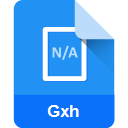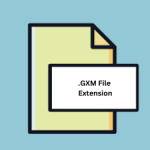.LIBPKG File Extension

What is an LIBPKG file?
.LIBPKG files are integral to Altium Designer’s library management system, serving as containers for integrated library packages.
These packages consolidate schematic symbols, footprints, simulation models, and other pertinent data necessary for designing electronic circuits and PCB layouts within Altium Designer’s environment.
Essentially, a .LIBPKG file encapsulates a comprehensive set of components, streamlining the design process and ensuring consistency across projects.
More Information.
Altium Designer’s transition to the .LIBPKG format marked a significant milestone in the software’s development timeline.
By encapsulating schematic symbols, PCB footprints, 3D models, and other relevant data into a unified package, engineers gained a more efficient means of managing and sharing component libraries.
This not only streamlined the design process but also facilitated collaboration among team members working on the same project.
Origin Of This File.
The .LIBPKG file extension was introduced as part of Altium Designer’s evolution towards a more integrated and streamlined library management system.
Before its inception, Altium Designer utilized separate libraries for schematic symbols, PCB footprints, and 3D models, which often led to fragmentation and inefficiencies in the design process.
The .LIBPKG format aimed to address these issues by consolidating all necessary components into a single, cohesive package.
File Structure Technical Specification.
.LIBPKG file is a structured container that holds various elements essential for electronic design. Within the package, components are organized hierarchically, with each component type (e.g., schematic symbols, PCB footprints) occupying its designated section.
Metadata associated with each component, such as part numbers, descriptions, and properties, is also stored within the .LIBPKG file.
The technical specifications of the .LIBPKG format is proprietary to Altium Designer, with detailed documentation provided by the software’s developer.
While the exact structure may vary between different versions of Altium Designer, the fundamental principles remain consistent across implementations.
How to Convert the File?
Converting .LIBPKG files to other formats or vice versa may be necessary to accommodate interoperability requirements or migrate to alternative EDA tools.
While direct conversion utilities may not be readily available due to the proprietary nature of the .LIBPKG format, several approaches can be considered:
- Manual Extraction: Engineers can manually extract individual components from .LIBPKG files and convert them to the desired format using Altium Designer or third-party tools. While labor-intensive, this method provides maximum control over the conversion process.
- Scripting: Automation scripts can be written to extract and convert .LIBPKG files in batch, streamlining the conversion process for large libraries. However, scripting requires programming skills and may not be feasible for all users.
- Third-Party Tools: Some third-party software solutions offer limited support for .LIBPKG files and may provide conversion capabilities to common formats such as CSV or XML. However, compatibility and data fidelity issues may arise during the conversion process.
Advantages And Disadvantages.
Advantages:
- Simplicity: By consolidating all library components into a single package, engineers can easily manage and distribute libraries without dealing with multiple files or directories.
- Version Control: .LIBPKG files facilitate version control, allowing engineers to track changes to library components over time and revert to previous versions if necessary.
- Collaboration: The unified nature of .LIBPKG files promote collaboration by providing a standardized format for sharing component libraries among team members.
Disadvantages:
- Vendor Lock-In: As a proprietary format exclusive to Altium Designer, .LIBPKG files may pose interoperability challenges for users of other EDA software.
- Complexity: While .LIBPKG files simplify library management for experienced Altium Designer users, newcomers may find the format intimidating due to its hierarchical structure and technical intricacies.
How to Open LIBPKG?
Open In Windows
- Install Altium Designer on your Windows machine.
- Double-click the .LIBPKG file to open it directly in Altium Designer.
- Alternatively, launch Altium Designer and use the “File” > “Open” menu to navigate to the .LIBPKG file and open it.
Open In Linux
- Consider using virtualization or emulation software to run Altium Designer on a Linux system.
- Alternatively, explore compatibility layers or Wine emulation to run Altium Designer or seek alternative EDA software solutions with Linux support.
Open In MAC
- Utilize virtualization software like Parallels Desktop or VMware Fusion to run Altium Designer on macOS.
- Alternatively, explore compatibility layers like Wine or consider using CrossOver to run Windows applications on macOS.
- Investigate alternative EDA software with macOS compatibility or conversion utilities to access .LIBPKG files.
Open In Android
- As Altium Designer is not available for Android, consider using remote desktop solutions to access a Windows machine running Altium Designer remotely from your Android device.
- Explore cloud-based EDA solutions that offer compatibility with .LIBPKG files and provide mobile-friendly interfaces.
Open In IOS
- Similar to Android, utilize remote desktop applications to access Altium Designer running on a Windows machine remotely from your iOS device.
- Investigate cloud-based EDA platforms with iOS-compatible interfaces or consider alternative software solutions with iOS support.













